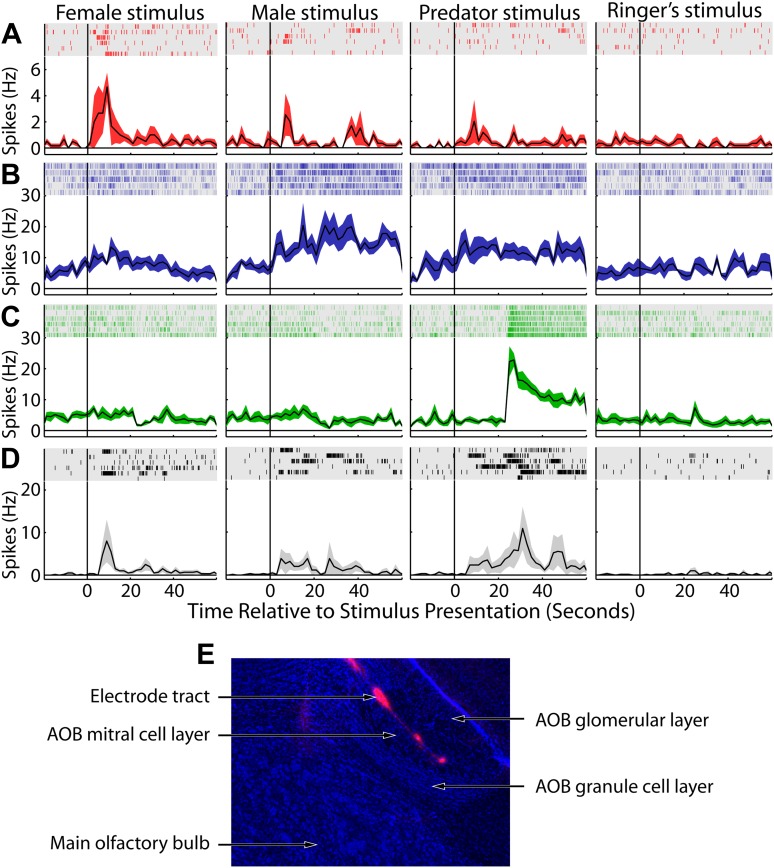(A) A single electrophysiological probe was positioned in the MeA of an adult male mouse (left) and 13 MeA units were simultaneously recorded on 8 evenly spaced recording sites (right: rows). Dashed lines indicate the recording sites/depth. The average responses to four stimuli (columns) are shown for each unit (asterisks indicate significant responses; bold asterisks indicate unit classification as ‘predator’ or ‘conspecific’). (B) The dorsoventral distance between pairs of neurons with different stimulus classifications (either ‘conspecific’ or ‘predator’) is shown for all simultaneously recorded pairs. Positive values indicate the conspecific unit was dorsal to the predator unit. Red, blue, and shaded purple curves represent data obtained from female, male, and all animals respectively with each curve skewed towards conspecific units being located dorsally (p<0.00001 for all distributions: signrank test; horizontal dashed line indicates the mean for all animals: 160, 95% CI = 123 to 189 µm). (C) The dorsoventral distance is plotted against the difference in stimulus specificity for all unit pairs. Regression analysis indicates a weak relationship between the dorsoventral distance and the difference in stimulus specificity for unit pairs (R2 = 0.033, F = 8.6, p=0.003; black line; light gray points omitted due to high leverage). Therefore, the dorsoventral topography is largely a result of quantitative biases in the numbers of ‘conspecific’ and ‘predator’ neurons located dorsal vs ventral, while only 3% of the variance is explained by a smooth transition from ‘predator’ selective neurons (ventral) to ‘conspecific’ selective neurons (dorsal).



